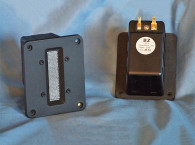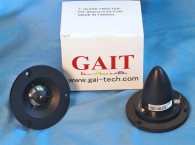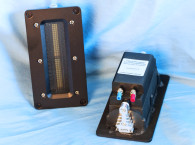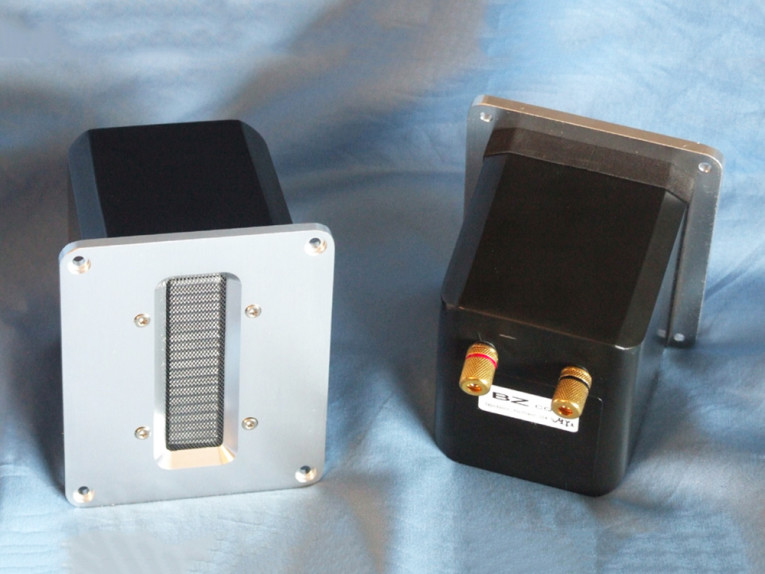
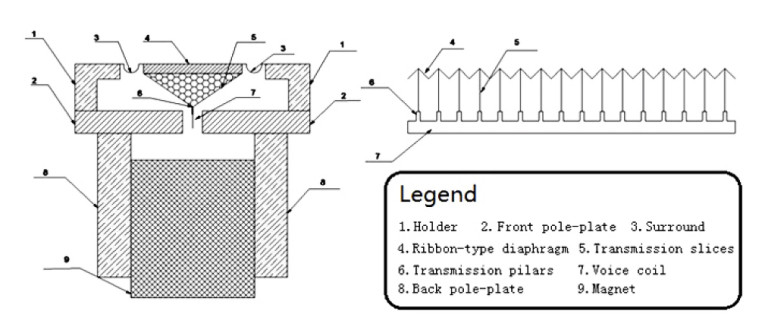
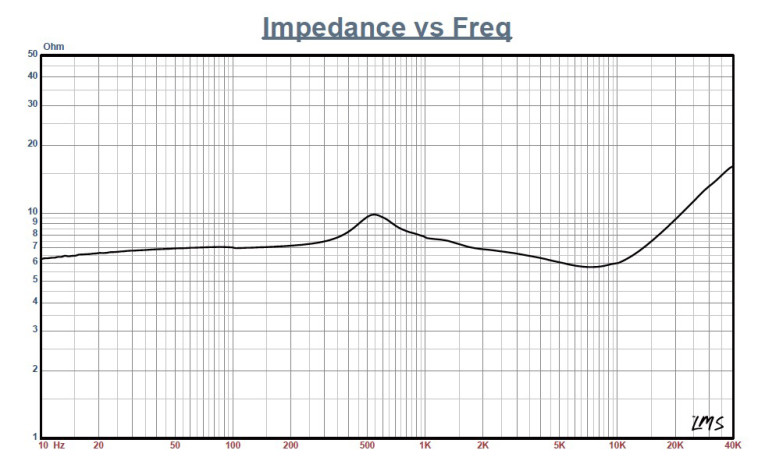
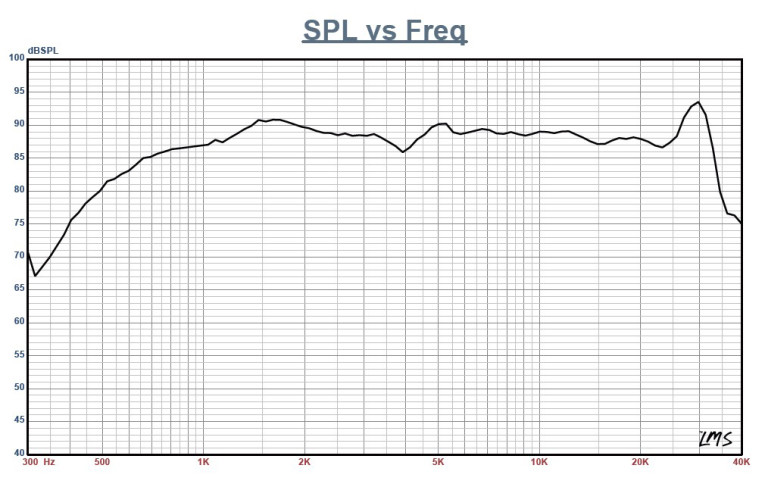
As can be seen in Figure 1, the CQ76 utilizes an 80 mm × 20 mm pleated aluminum diaphragm making it look like an air motion transformer without the front located magnets. The pleats are each connected mechanically to a section of the voice coil. What has been changed in the new version I received this month is the shape of the diaphragm. Instead of being triangular, the new diaphragm is rounded without sharp corners and more of a “wave” shape. Other features, which are the same as the original, include the injection-molded back cavity, an attractive bushed aluminum faceplate, a black mesh screen protecting the diaphragm, and a pair of gold binding posts for terminals.
I commenced analysis for the CQ76 by performing a 300-point impedance curve (see Figure 2). This transducer’s impedance features a modest resonance peak at 546 Hz (the original exhibited a twin peak), plus a reactive rise in the impedance above 10 kHz (first version began at 4 kHz). DCR for the new CQ76 measured 4.12 Ω with a minimum impedance of 5.75 Ω at 7.2 kHz.
Following the impedance measurement, I mounted the CQ76 in an enclosure with a 12” × 6” baffle area and proceeded to measure the on- and off-axis SPL with sweeps at 0°, 15°, 30°, and 45° using gated 100-point 2.83 V/1 m sine wave sweeps from 300 Hz to 40 kHz. Data was then taken in both the horizontal and the vertical planes. Figure 3 shows the BoZhen CQ76’s on-axis response. The BoZhen CQ76’s frequency response is a smooth and even ±2.46 dB from 875 Hz to 20 kHz, peaking up about 6 dB at 30 kHz before beginning its low-pass rolloff.
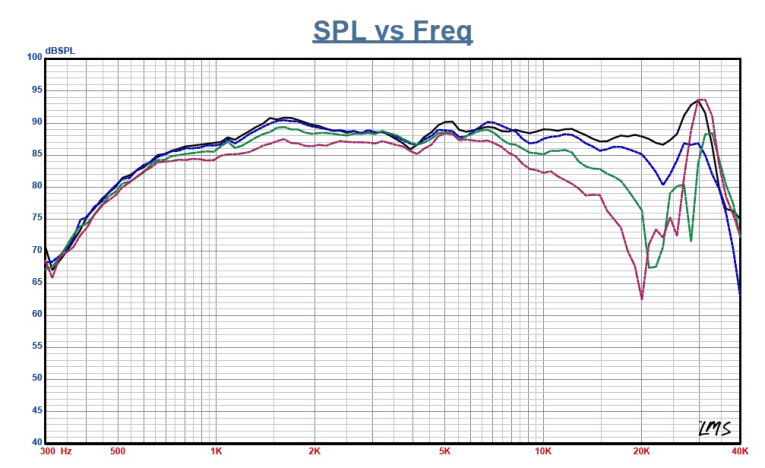
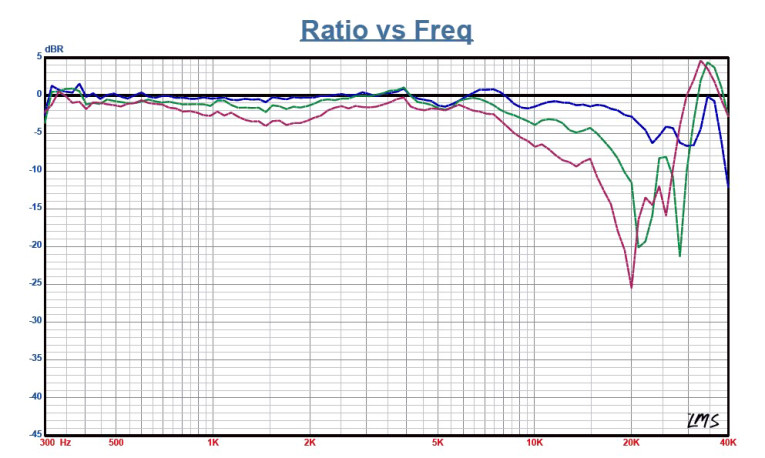
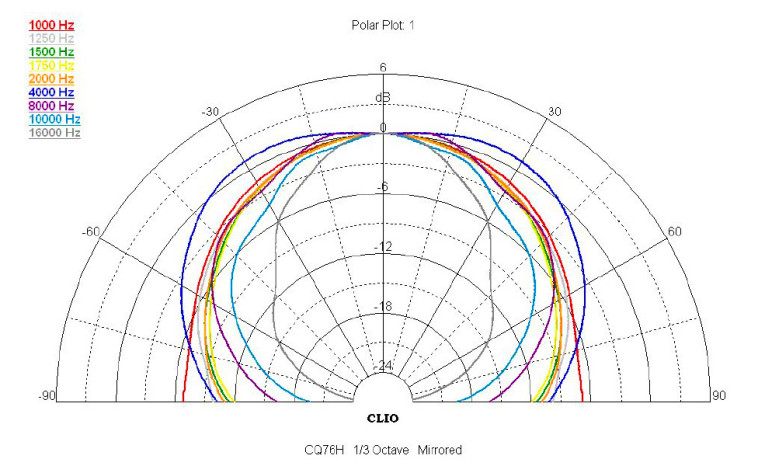
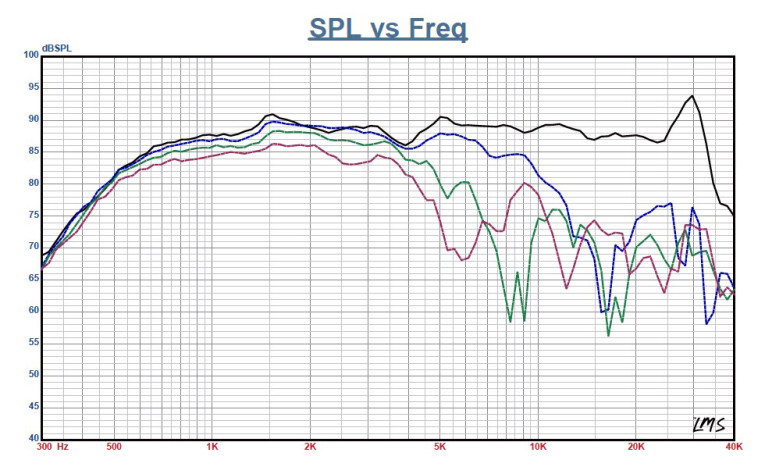
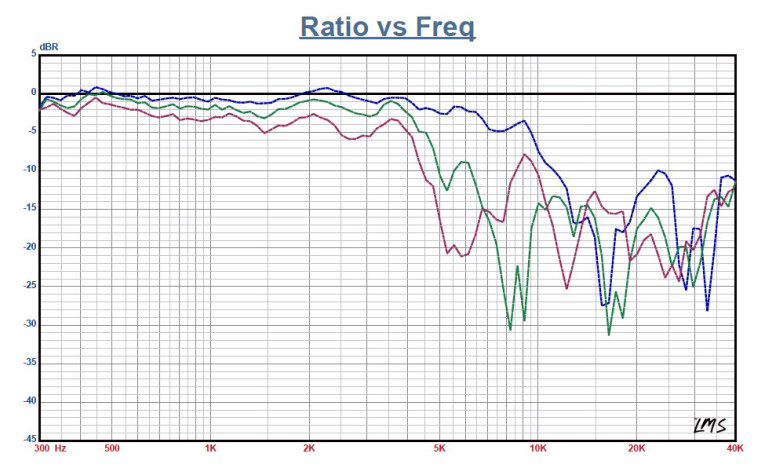

Figure 4 shows the on- and off-axis frequency response in the horizontal plane, which is similar to the typical horizontal directivity of a 1” dome tweeter. Figure 5 gives the normalized version of Figure 4, while Figure 6 displays the CLIO polar plot (with 10° increments) for the horizontal plane. Since the aspect ratio of the CQ76 aperture is like most ribbons there is substantial directivity in the vertical plane (see Figure 7), with the normalized data shown in Figure 8, and the CLIO polar plot shown in Figure 9.
The two sample SPL comparison is shown in Figure 10, indicating that both CQ76s were closely matched within 1 dB to 15 kHz. For the last batch of measurements, I fired up the Listen SoundCheck 15 software with the SoundConnect analyzer, the SCM microphone, and the SoundConnect preamp/power supply (all provided courtesy of Listen, Inc.). I used the built-in pink noise generator and SLM utilities to set the the SPL to 94 dB/1 m (6.6 V). Then, I relocated the 0.25” SCM microphone to 10cm from the faceplate of the BoZhen CQ76, and ran the distortion curves (see Figure 11). Note that the stimulus was limited to 1 kHz as its lowest frequency.
For the final measurement on the BoZhen New Audio Lab ribbon tweeter, I performed an impulse measurement, and then imported the results into the Listen SoundMap software, windowed out the room reflections, and created the CSD depicted in Figure 12 and the STFT shown in Figure 13. For more information about the unique high-frequency ribbon tweeter from BoZhen New Audio Lab, visit the BoZhen website at www.bzspeakers.com. VC

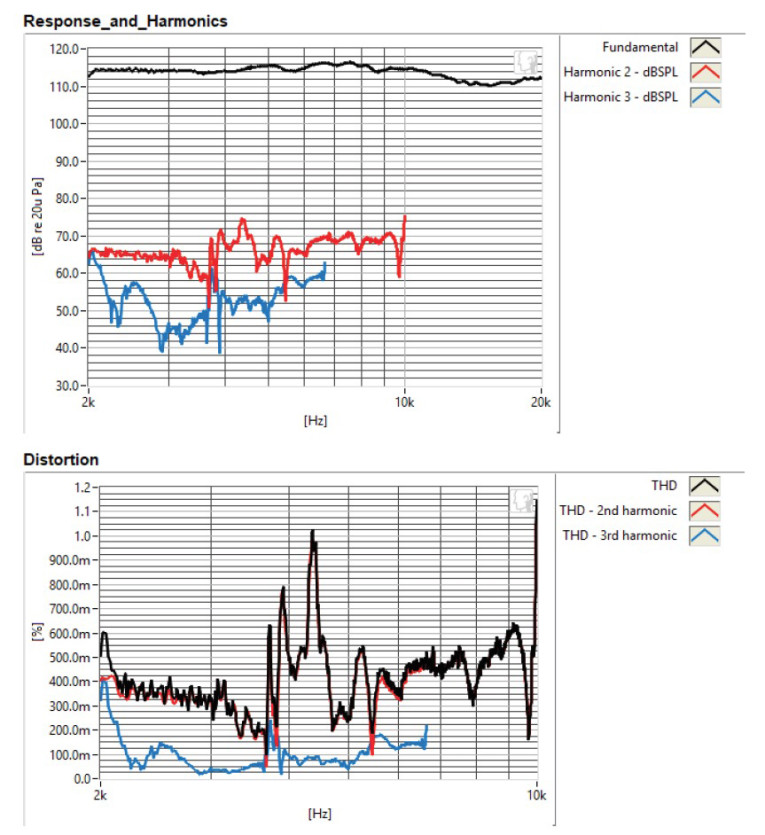
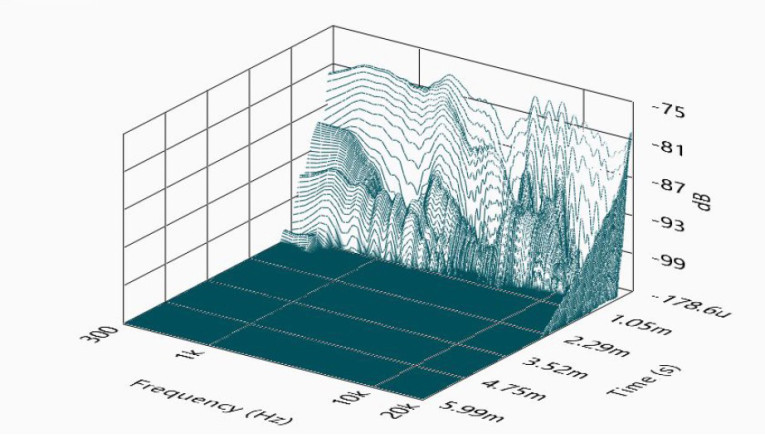
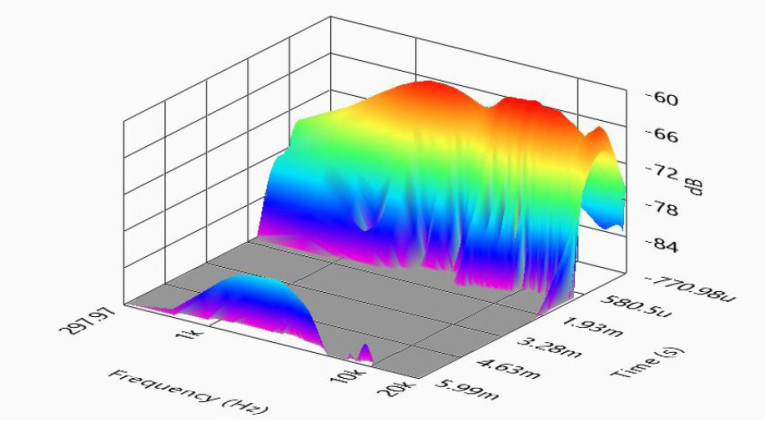
This article was originally published in Voice Coil, October 2017.




